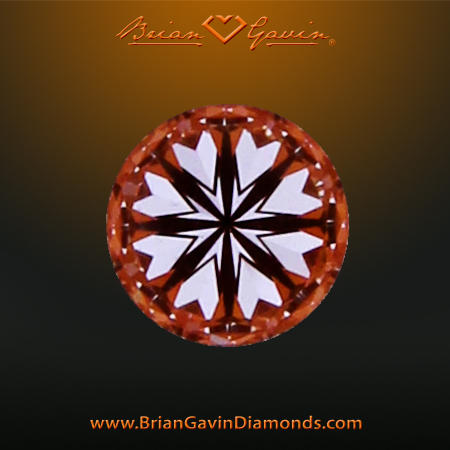
Marcel Tolkowsky’s Diamond Design of 1919
This blog post is an expansion on the response to the question “Which Ideal Cut Diamond Should I Buy?” in which the Tolkowsky Ideal Cut Diamond is referenced, and I wanted to provide a more in-depth description and history of Marcel Tolkowsky’s Diamond Design, since many people credit Marcel Tolkowsky with inventing the ideal cut diamond in 1919, and people frequently ask whether Brian Gavin Signature round diamonds are considered to be Tolkowsky ideal cut diamonds.
The short and sweet answer is that Brian Gavin Signature round diamonds are light years ahead of anything that Marcel Tolkowsky could have dreamed about producing, and we say that with all due respect.
History of the Tolkowsky Ideal Cut Diamond:
The Tolkowsky Ideal Cut Diamond was introduced in 1919, when Marcel Tolkowsky, who was a mathematician and member of a prominent family of diamond cutters in Belgium, published Tolkowky’s Diamond Design.
Tolkowsky’s Diamond Design suggests that a round brilliant cut diamond will be most brilliant when cut to a total depth of 59.3% with a table diameter of 53% and a crown angle of 34.5 degrees, with a pavilion angle of 40.75 degrees, and a zero percent girdle, which is essentially impossible to produce, because it would be too brittle, and there must be sufficient space between the upper and lower halves of the diamond to properly fashion the facets.
The necessity of a girdle edge which is not too thin, nor too thick, requires that the total depth of a modern round brilliant ideal cut diamond actually be deeper than 59.3% and it is important to note that the computerized proportions analysis systems used by the gemological laboratories and diamond cutters like Brian Gavin, round off the measurements for crown and pavilion angle, thus you’ll never actually find a GIA Excellent or AGS Ideal-0 cut diamond grading report that indicates that the pavilion angle is 40.75 degrees; it will be stated as 40.7 degrees if the average pavilion angle is between 40.7 – 40.74 degrees, and it will be stated as 40.8 degrees if it is between 40.75 – 40.8 degrees.
However the general concept of the Tolkowsky Ideal Cut Diamond is mathematically sound, and has been proven time and time again, to deliver the highest volume of light return, and a virtual balance of brilliance (white sparkle) and dispersion / fire (colored sparkle) and thus it should not really come as a surprise, that the middle of the range designated by the American Gem Society Laboratory’s zero ideal cut proportions rating, matches up quite nicely to the range originally suggested by Marcel Tolkowsky.
Did Marcel Tolkowsky invent the ideal cut diamond?
While Marcel Tolkowsky is widely recognized as inventing the round brilliant ideal cut diamond, the reality is that he was just one of many diamond cutters who was trying to improve the design of the round brilliant cut diamond at the time…
And diamond cutters like Brian Gavin, who is a fifth generation diamond cutter, have certainly improved upon Tolkowky’s Diamond Design, by fine tuning the optical precision of round brilliant cut diamond design, so that the facet structure of the diamond creates reflections of light within the diamond that create a crisp and complete pattern of hearts and arrows; which means that Brian Gavin Signature round hearts and arrows diamonds exhibit a higher volume of light return, and more intense sparkle, that is larger in size, than what is exhibited by standard ideal cut diamonds.
It takes an incredible amount of diamond cutting experience and skill to cut a round brilliant cut diamond to the degree of optical precision necessary to produce a crisp and complete pattern of hearts and arrows. Not only must the diamond be cut to just the right proportions, but every facet on the diamond must also be the same size and shape, and aligned with the highest degree of three hundred and sixty degree precision, or the hearts will be misshapen, uneven in size, be spaced irregularly, with split clefts, and twisted tips.
Diamond cutters like Marcel Tolkowsky were pioneers of diamond cut quality, who set themselves apart from the pack, by focusing on how to improve the design of a round brilliant cut diamond, so that it might produce the highest amount of light return.
Diamond cutters like Brian Gavin continue the space race as it were, by constantly pushing the envelope of diamond cut quality and optical precision, to improve upon Tolkowsky’s Diamond Design, and create diamonds that exhibit not only the highest volume of light return, but also the most incredible sparkle factor! Brian Gavin sets the standard for hearts and arrows diamonds, we’re confident that Marcel Tolkowsky would be impressed!




















